The depth at which a fly is fished and its path through the water column is often more important than its colour and size. Choosing the right fly-line is therefore vital, but with so many lines on the market, it’s hard to know what to use and when. I have three types of sinker in my tackle-box, 12 lines in total, with sink rates of between three and eight inches per second (eg S3-S8). This gives me total control of my flies at between 5ft and 20ft below the surface, depending on conditions.
Depth at which fish are holding
Early in the season when fish are deeper, it’s safe to assume high-density lines (eg S5, S7) are best. Later in the year, line choice is more critical because you must explore many depths to find the trout.
Speed of retrieve
This has a big impact on the line’s path through the water column. Generally, the faster the retrieve, the higher the line will lift, depending on density.
All lines have a retrieve speed at which they maintain a depth. Anything faster and they lift — anything slower and they drop.
Casting distance
When combined with retrieve speed, casting distance dictates the depth the line achieves at its deepest point during the retrieve. For example, if I’m boat fishing and snagging the bottom on a 25-yard cast, instead of changing to a slower sinking line, I’ll shorten my cast by two yards, so the flies have less time to reach the bottom.
Three types of sinking line
1. integrated head and running line (eg Airflo 40+ or Rio Outbound)
This short-headed line, usually 35ft-45ft, has a fine-diameter floating or intermediate running line.
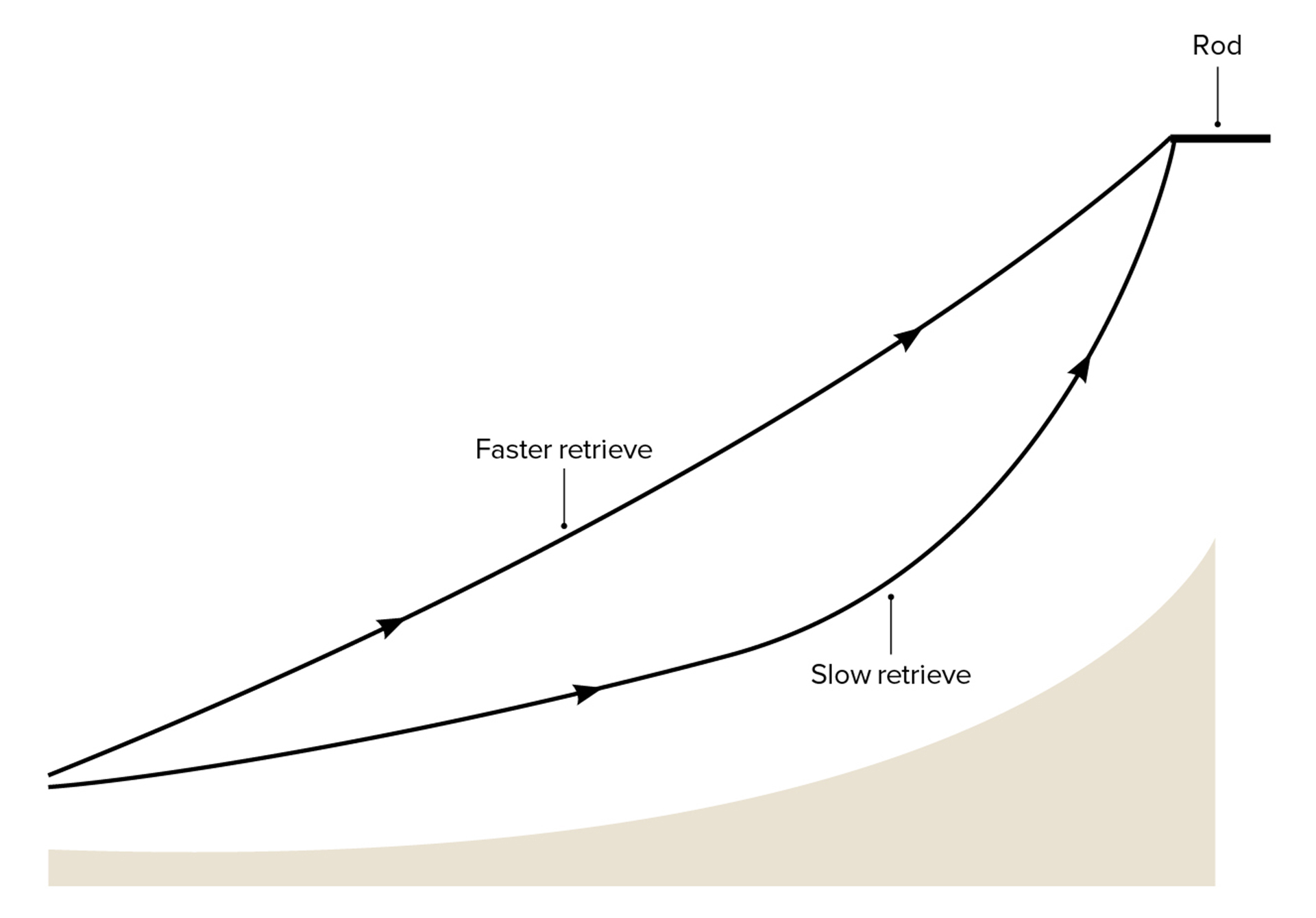
Pros
■ The heavy head, which loads the rod efficiently, combined with a light, thin running line, means you can cast farther.
■ Lifts in the water during the retrieve. The faster the retrieve, the more pronounced the lift. Good from the shore because the running line stays high in the water column, allowing you to work flies closer to the bank without fouling the bottom.
■ On a drifting boat when fish are feeding tight to a downwind shore, this long-casting line allows you to make two or three casts in the trout’s zone, rather than only one with a shorter line that achieves less distance.
Cons
■ The running line is thinner and lighter than standard. On a boat it can blow around and tangle on windy days.
■ The retrieve path is quite flat, and the angle change is not as pronounced at the end of the retrieve. As a result, it isn’t as good as other sinkers when fishing the hang from depth.
2. Density-compensated sinking line (eg Airflo Sixth Sense, Rio In-touch or Scientific Anglers’ Sonar)
This full fly-line comprises a thin tip, thick belly and running line. If the fly-line is made from single-density material, the belly will sink faster than the tip or running line. To flatten the sinking profile of the line, the density is increased towards the tip (to compensate).
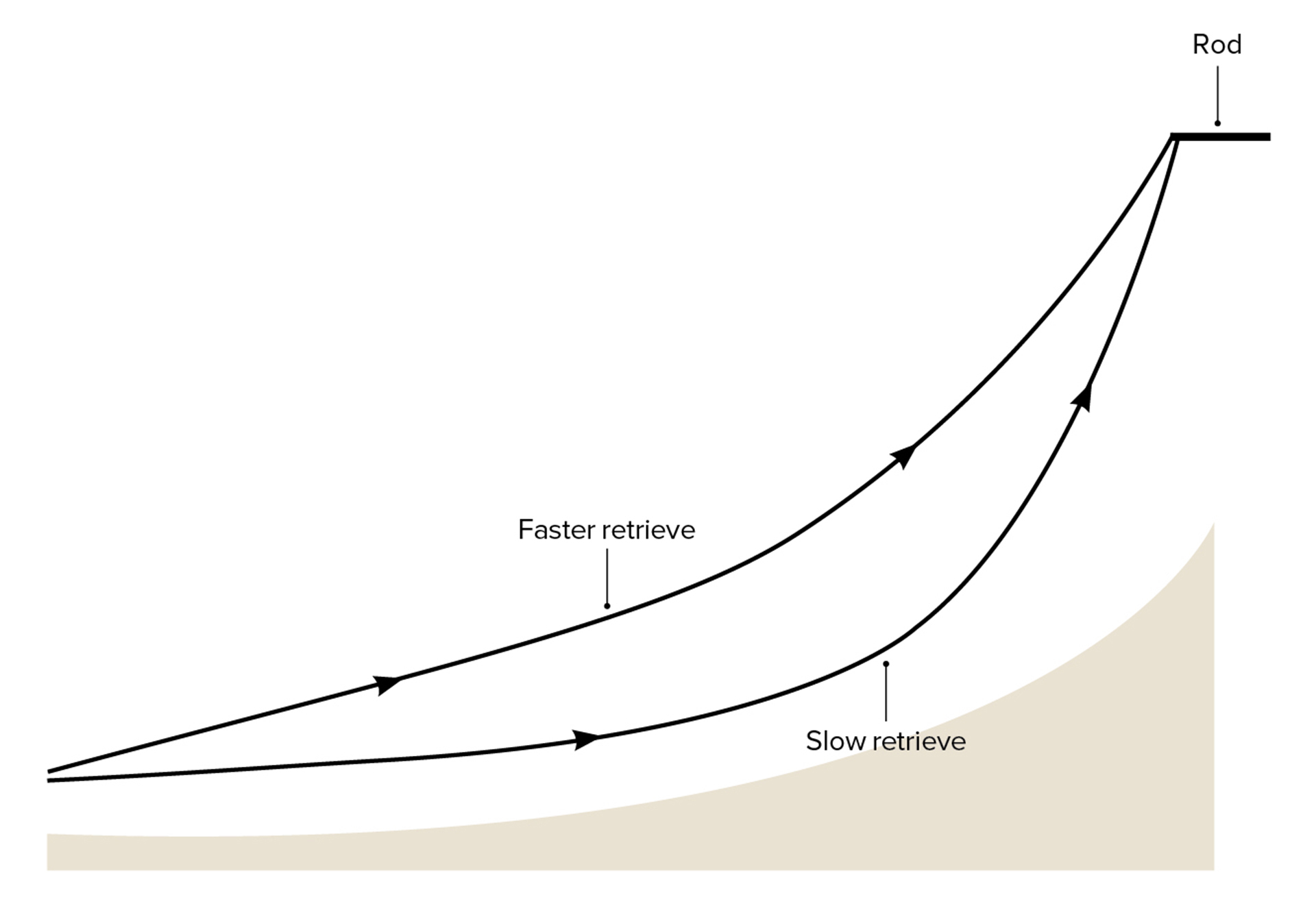
Pros
■ Denser tip has better control over fly’s depth in the water column.
■ Casts well in the wind.
■ Often has hang markers, providing a visual indication of how much line is in the water, making successful retrieve patterns easy to repeat.
Cons
■ Covers a smaller depth band during the first half of the retrieve, so it’s not as good at searching depths later in the season when fish might hold at 2ft or 15ft on the same day.
■ On a slow retrieve it continues to pull flies deeper, which can be good or bad, but often it’s necessary to balance the line’s sink speed to the depth or change the length of the line you’ve cast to avoid hooking the bottom.
3. Sweep line (eg Airflo Sweep, Rio Fathom Clean Sweep)
A traditional non-density compensated profile, sinking belly first.
A low-stretch core is essential because its curved sinking path effectively creates slack line that can make takes subtle.
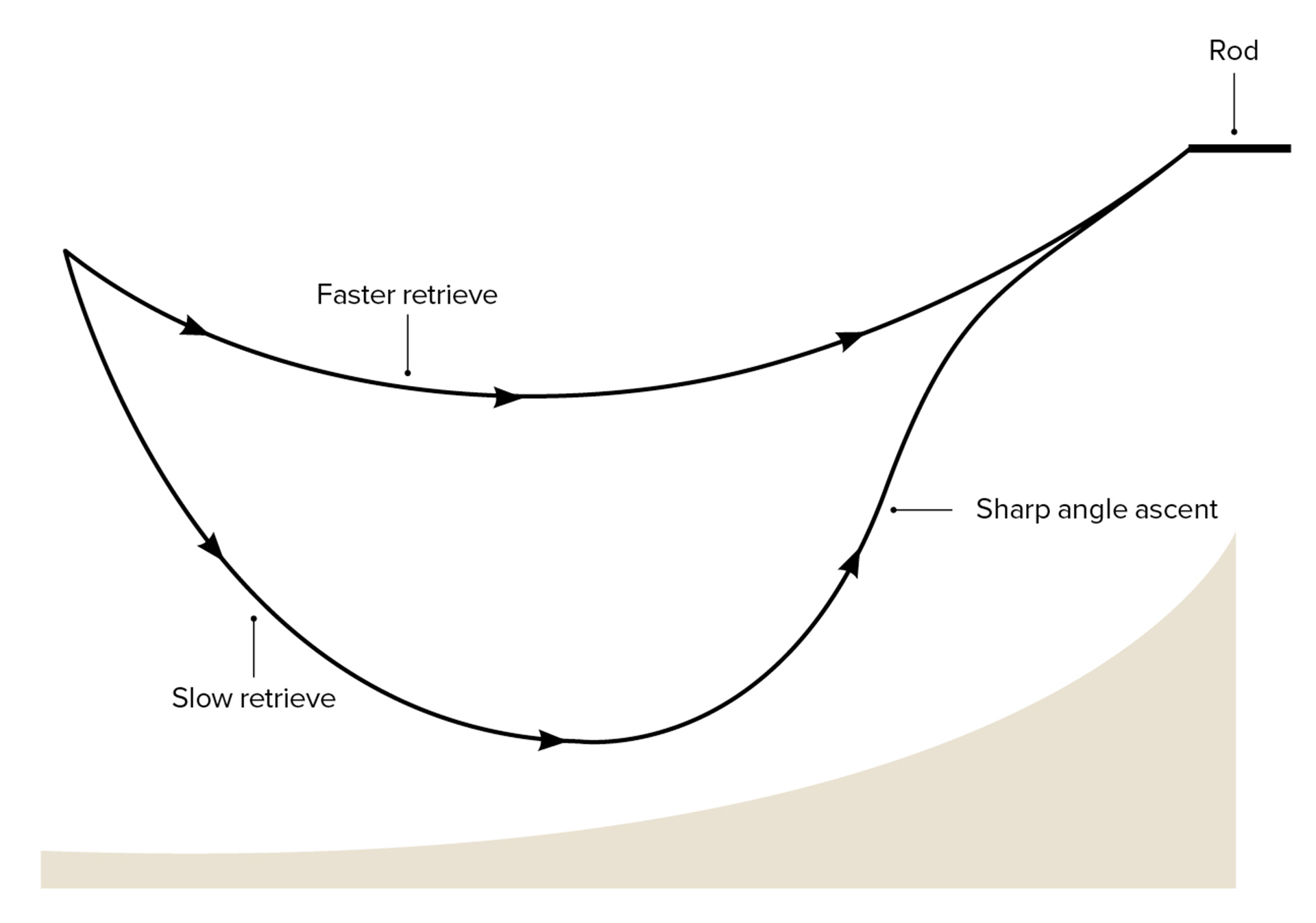
Pros
■ Casts well because its light running line is easy to lift on the forward cast for improved shootability, and the turnover of the lighter tip is less aggressive.
■ Fishes multiple layers during a single retrieve and is a great searching line because you can quickly establish if fish have moved up in the water column — takes early in the retrieve indicate a slow sinking line is needed or that casts should be shorter to keep flies higher for longer.
■ Dives with an attractive curve through the water column and creates a steeper angle of ascent at the end of the retrieve for an effective vertical lift and hang of flies.
Cons
■ In early spring when fish are deep, it doesn’t get flies deep quickly enough but then continues to pull them deeper during the retrieve, so they spend less time in the fish zone.
■ Not a bank-fishing line, unless there’s a steep drop-off near the shore.
Bank fishing
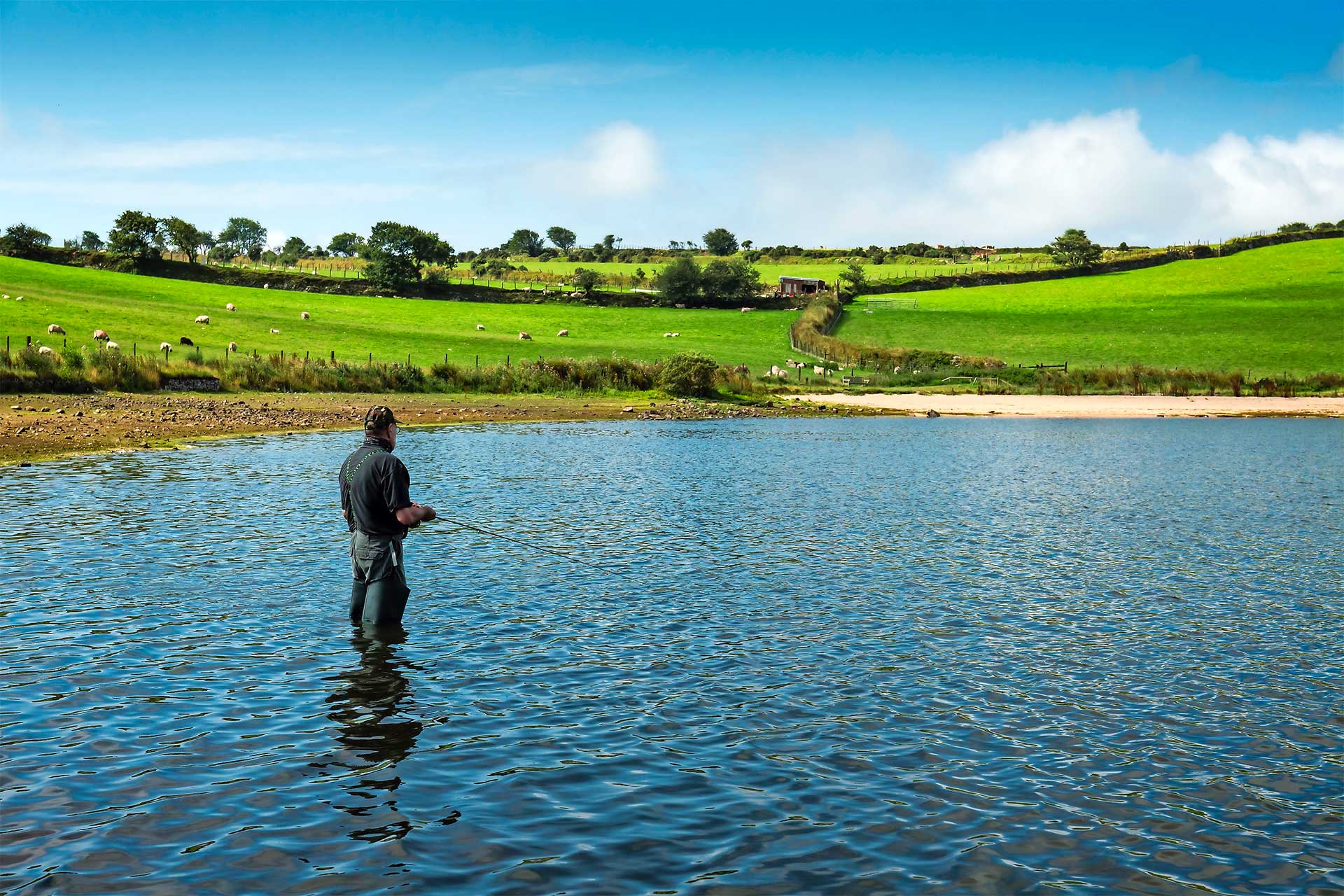
The further you can cast from the bank, the deeper the water you can reach. I use an integrated head because it will lift in the water column during the retrieve, I can cast it a long way and its slow-sinking intermediate running line is less likely to tangle at my feet.
The only time I’d reach for a full line is in windy weather or when fish are holding very deep in a concrete bowl reservoir and a significant undertow is affecting my presentation. A short head is more affected, whereas a full line offers more stability.
From the bank, the speed of retrieve is more crucial to the sink rate than almost any other situation. Imagine you’re casting from the shore into 10ft of water where fish are holding 2ft off the bottom.
Option 1 is an S7 head. This will easily reach the fish’s depth, but the only real fly choice is a foam-eyed Booby or the line will hit the bottom in less than 20 seconds.
Option 2 is an S3 head. This will allow you to fish a Tadpole or similar at a reasonable speed without hitting bottom for most of the cast. It would be my preferred option if the water depth close to the bank drops off quickly. Unlike fishing from a boat, you’ll be pulling flies into shallow water and often you’ll need to quicken your retrieve as the fly approaches the shallow bottom to avoid it snagging.
Option 3 is an Intermediate head and weighted fly. This is my preferred option when fishing a shallow shelving bank with a small bead-head fly or a leaded Tadpole, sinking at around six inches per second (subject to bead size and material). Fishing a slower sinking line will allow you to fish the full length of the retrieve without snagging on the contour change. Early in the season when fish aren’t always in the mood to chase, this is a reliable alternative to the Booby.
Fish will often follow a depth contour along the shoreline, and you may find all the takes happen the same distance from the shore, usually as the fly leaves the fish’s safety zone and it has to decide whether to eat or chase its meal into dangerous shallows. Always pay attention to these few feet — it’s the bank angler’s equivalent of the hang.
Boat fishing
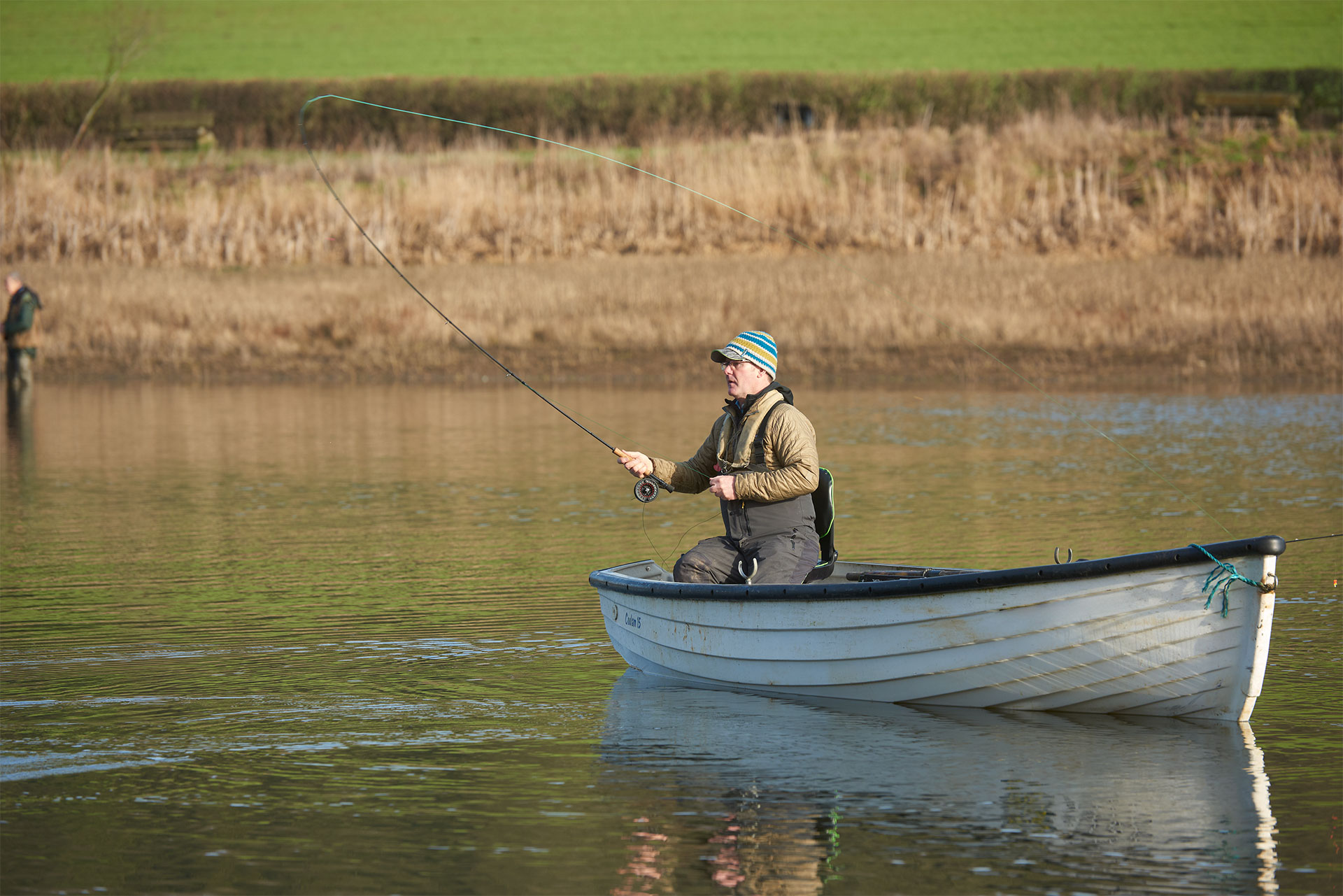
When fish are lying deep early in the season, a density-compensated line will keep your flies in the fish’s zone for the longest possible time each cast. Picking the right sink rate is dictated by depth of water and the speed of retrieve.
Imagine you are fishing in the 10ft-15ft zone where fish are holding 2ft off the bottom. If you’re fishing at anchor, much of the bank-fishing advice above applies, but if you’re drifting, you have less time to reach the fish’s depth. You will need a faster sinking line to reach the fish’s depth before you drift over the top of your flies.
If the wind is more than 5mph and I’m drifting quickly, I’ll start with an S7 line to quickly search the depths. With the S7, instead of counting the line down in five-second stages, I’ll count in seven-second stages — this allows my flies to reach the bottom in four stages (28 seconds) instead of six stages (30 seconds). Thinking in stages is a repeatable process that helps achieve the same depth every time. A good sinking-line angler should have almost 3D vision of their flies’ progress underwater.
On calmer days, you can achieve a similar depth with an S5, and this gives you more options with the retrieve speed. You may also find that as the temperature rises around midday, the fish rise in the water, and the slightly slower sinking line is the right choice.
Unlike bank fishing, on a boat you face a fairly consistent water depth, which makes line choice less complex — just match the depth you want to fish to the speed of retrieve. An exception would be drifting from deep to shallow water with the fish running close to the shore. Then I’d consider a sweep line, casting to the shoreline and using the line’s sink profile to pull flies down the contour.
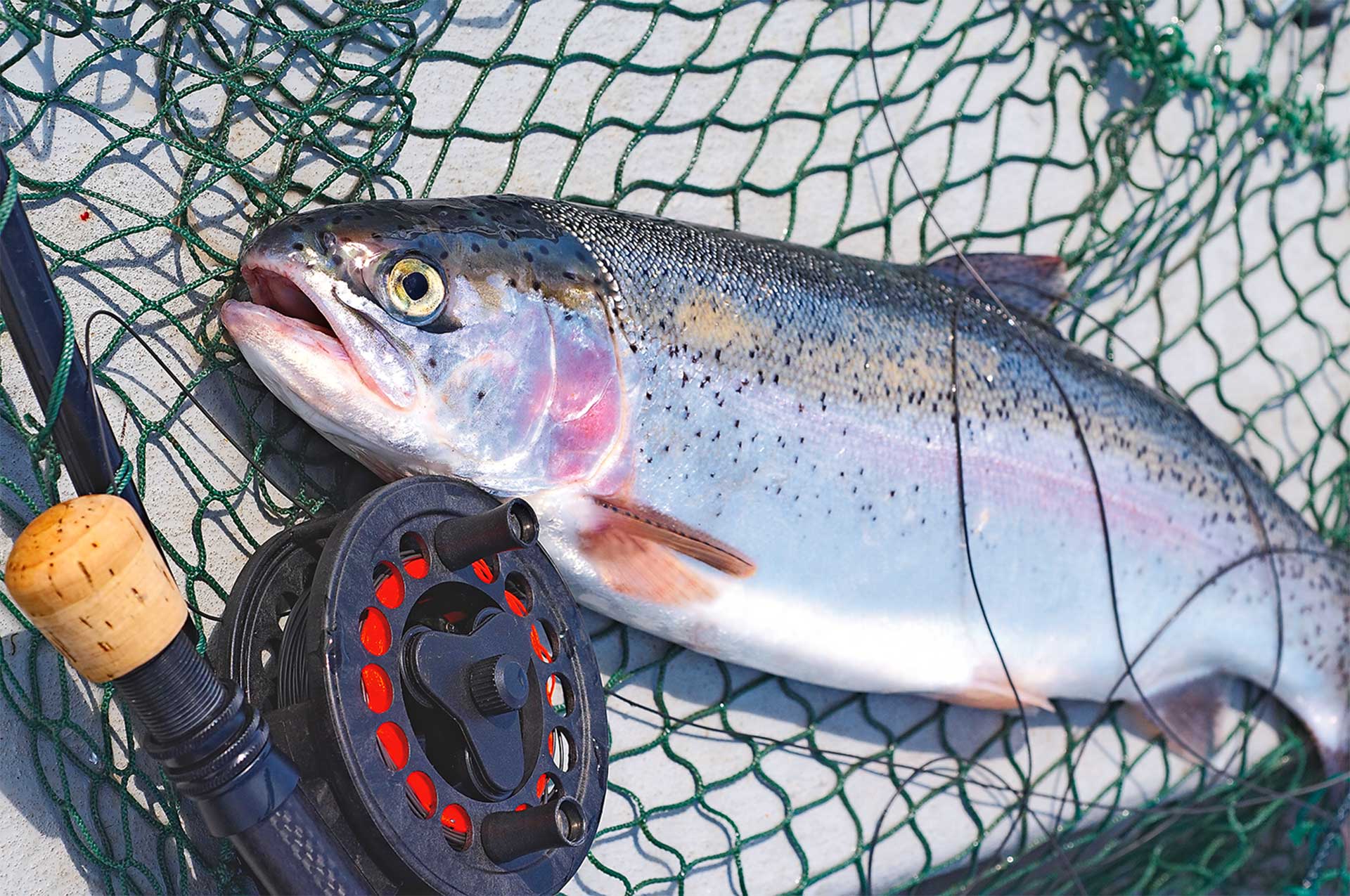
| Effect of the leader on the retrieve path |
If you fish with a long leader it takes longer for the fly-line to affect flies, and vice versa with a short leader.
I remember a match at Blagdon when I fished a Di7 and team of mini lures. It was high summer, and the fish had dropped deep into a contour off Rainbow Point. I was catching fish but my boat partner, an England international, despite using the same line, was not. In his rush to copy my method he’d attached his long deep-nymphing leader to the Di7 with 10ft to the first dropper. Mine was less than half this and dragged the flies deeper, into the fish zone. |
| Sinking lines and nymphs |
| We associate nymphing with intermediate and floating lines, but trout will take nymphs on a sinker. One of my favourite methods is short-lining with a Di7, a very short leader and a team of three or four buzzers 3ft apart. I’m happy fishing this way in depths of more than 8ft. Worth trying on days when the wind has killed the presentation of a floating line. I like the way I can fish the lift-and-hang with this method regardless of wind strength and I’ve done well late in the day when fish have stopped chasing bright lures and attractors. |
Discover the latest tactics from the UK's leading fly-fishers every month in Trout & Salmon magazine. Subscribe or buy single issues here